 2018 CBECS: Principal Building Activities
2018 CBECS: Principal Building Activities
Religious Worship
Religious worship buildings are those in which people gather for religious activities, such as chapels, churches, mosques, synagogues, and temples.
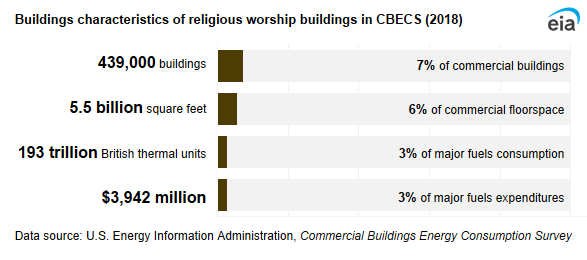
We do not publish subcategories of religious worship buildings.
More than one-half (61%) of religious worship buildings were 10,000 square feet or smaller; 38% were between 1,000 square feet and 5,000 square feet. About 2% of religious worship buildings were larger than 50,000 square feet. On average, religious worship buildings were 12,500 square feet per building.
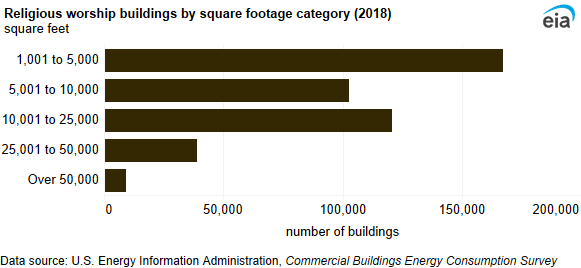
More than one-half (54%) of all religious worship buildings were constructed from 1970 to 2018, and 22% of religious worship buildings were constructed before 1946.
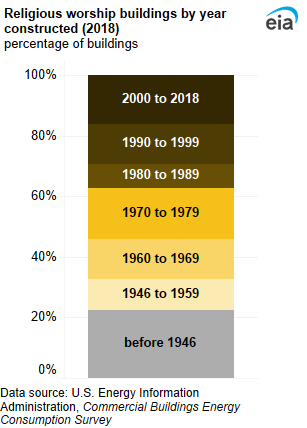
Energy use in religious worship buildings
Religious worship buildings used 193 trillion British thermal units (TBtu) of energy in 2018. Although religious worship buildings accounted for 6% of total commercial floorspace, these buildings accounted for 3% of energy consumption in commercial buildings. Similar amounts of natural gas (94 TBtu) and electricity (91 TBtu) were used. The mean energy intensity for religious worship buildings was 35.3 thousand British thermal units (MBtu) per square foot.
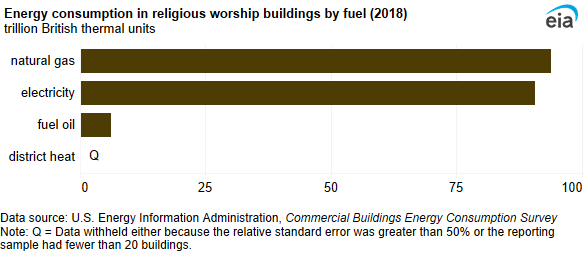
Space heating accounted for the largest share of end-use consumption in religious worship buildings (45%). All other end uses each accounted for 11% or less of end-use consumption.
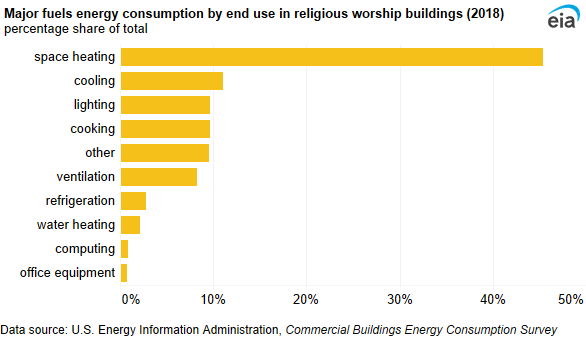
Energy intensity was highest for space heating (17.8 MBtu per square foot) and lowest for office equipment (0.3 MBtu per square foot).
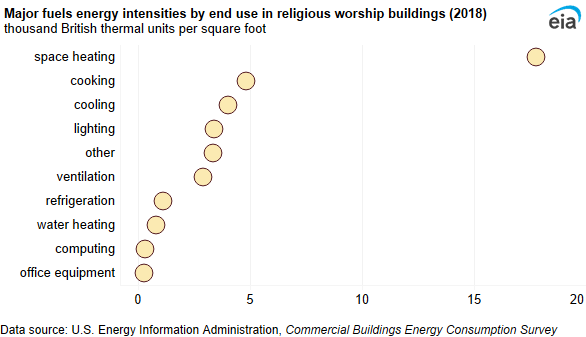
Inside religious worship buildings
Furnaces were the most common heating equipment and were used in 41% of religious worship buildings. The second-most-used heating equipment was packaged heating units (37%).
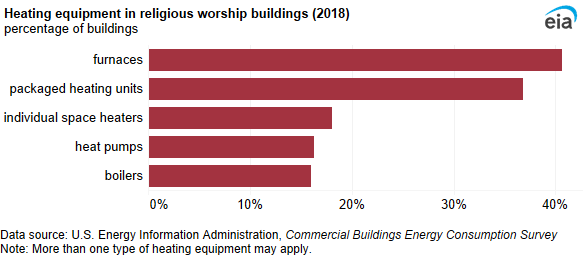
Packaged air conditioners were the most common cooling equipment (51%) in religious worship buildings. Residential-type central air conditioners were the second-most-used cooling equipment (29%).
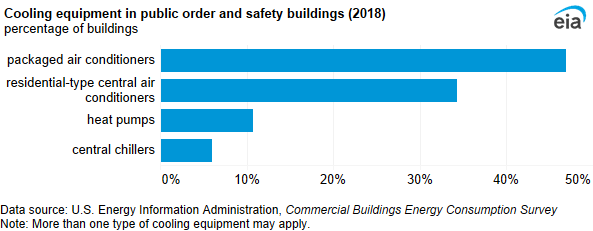



 /p>
/p>